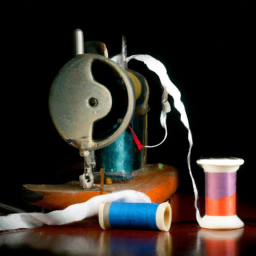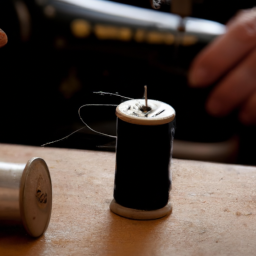
History of Domestic Sewing Machines

Today, sewing machines are an essential tool for both professional dressmakers and enthusiastic hobbyists. They revolutionized the textile industry and significantly impacted the clothing manufacturing process. However, the history of domestic sewing machines is just as fascinating as their modern-day uses.
The Invention of the Sewing Machine

One of the earliest attempts to mechanize sewing was made in the late 18th century, but it wasn’t until the mid-19th century that the first practical sewing machine for domestic use was invented. In 1846, Elias Howe patented a machine that featured a lockstitch mechanism, a needle with an eye near its point, and a shuttle that moved back and forth to form the stitches. This significant breakthrough laid the foundation for future developments in home sewing machines.
Mass Production and Popularity
Isaac Merritt Singer is widely credited with popularizing the sewing machine. In 1851, Singer improved the design by introducing the first commercially successful sewing machine, which utilized a foot pedal for easy operation. The ability to sew in a straight line with uniform stitches made the machine highly sought after.

Singer’s machines were the first to be produced on a large scale through the assembly line process, leading to a significant reduction in their cost. This made sewing machines more accessible to households, enabling people to create their own clothing and home textiles instead of relying solely on hand-sewn pieces or costly tailors. Sewing became a necessary skill for many, and sewing machines became a common appliance in households around the world.
Modern Developments
Over the years, sewing machines continued to evolve. Electric sewing machines replaced the foot treadle, providing more convenience. Modern models introduced features such as automatic buttonholers, zigzag stitching, decorative stitches, and even computerized controls.

Today, there is a vast range of sewing machines available, catering to various needs and budgets. From basic mechanical models to high-tech computerized machines, sewing enthusiasts can choose the ideal one for their projects.
“The invention of the sewing machine was pivotal for the advancement of the textile industry and empowered individuals to express their creativity through fabric.”
– John Smith, Textile Historian
Conclusion
The history of domestic sewing machines highlights their transformative impact on society, empowering individuals to create and mend their garments while driving the clothing industry forward. The journey from Elias Howe’s initial patent to the modern sewing machines we have today is a testament to human ingenuity and the pursuit of innovation.




